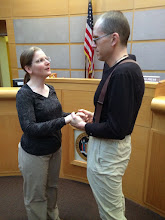
If there's one cartographic trend I noticed during my four days at the Festival of Maps, it's experimentation in the depiction of mountains. Ptolemy atlases of the fifteenth and sixteenth centuries contained at least as many different styles of mountains as there were cartographers. Click on the image above for a larger version, then come back to this list describing the eight images across the top from left to right.
- “Secunda Europe tabula” (Europe 2). In Claudius Ptolemy, Geographia. Edited by Domitius Calderinus; map engraver unknown. Rome: Arnold Buckinck, 1478.
- “Hispania novella.” In Claudius Ptolemy, Geographia. Translated and with maps by Francesco Berlinghieri. Florence: Nicolo Todescho [Nicolaus Laurentii], 1480–1482.
- “Tertia Europe tabula” (Europe 3). In Claudius Ptolemy, Geographia. Based on a manuscript edited and with maps by Donnus (Dominus) Nicolaus Germanus. Ulm: Lienhart Holle, 1482.
- “Quarta Europe tabula” (Europe 4). In Claudius Ptolemy, Cosmographia. Based on a manuscript edited and with maps by Donnus (Dominus) Nicolaus Germanus. Ulm: Johann Reger, 1486.
- “Tabula Europ Sexta Italiae” (Europe 6). In Claudius Ptolemy, Geographia. Edited by Matthias Ringmann and Martin Waldseemüller; maps by Waldseemüller. Strasbourg: Published by Jacobus Aeszler and Georg Übelin, printed by Johann Schott, 1513.
- “Tabula VIII Europ” (Europe 8). In Claudius Ptolemy, Geographia. Translated by Willibald Pirckheimer; edited by Michael Servetus (Villanovanus); maps by Martin Waldseemüller, reduced by Lorenz Fries. Lyons: Melchior and Gaspar Trechsel, 1535.
- “Tabula Europae IX” (Europe 9). In Claudius Ptolemy, Geographia. Edited and with maps by Sebastian Münster. Basel: Henricus Petri, 1540.
- “Aphricae Tabula II” (Africa 2). Claudius Ptolemy, Geographia. Edited and with maps by Sebastian Münster (from woodblocks used for the 1540 edition). Basel: Henricus Petri, 1545.
Some cartographers tried to show mountains from above, thus providing a perspective consistent with the rest of the landscape; others showed them more or less from the side. Within their established perspectives, some attempted to convey a true sense of texture and depth and others established only the vaguest of forms, but all were more or less cartoonish: they showed that a mountain range was there, but made no attempt to convey this peak or that particular pass. The fascinating thing to me, aside from the sheer range of experimentation, is that during this period there seems to be no correspondence between attempts at consistent perspective and attempts at [what is an art word that's equivalent to "resolution"?]. In #1 The mountains are very cartoonish and are portrayed from a land-bound vantage point with no attempt at perspective, yet some attempt was made to give them a sense of depth through shading. #2 shows refined texturing, yet is completely symbolic: mountain ranges appear as perfectly smooth, abruptly beveled plateaus. It's an interesting technique, but that smooth beveling has a major drawback: my eye keeps telling me that those are river valleys, not mountains. #3 displays a more successful attempt at realistic texture and shading than the very crude #4, yet both were clearly intended to convey a true overhead perspective. #5 really caught my eye; it was the most refined attempt that I saw from that period to realistically show textured, shaded mountains from overhead. In #6-#8 we go back to cartoonish mountains, yet these are slightly less so than #1. Also, the cartographers make some effort at perspective by making one mountain recede behind another; this allows the bird's-eye slanted view of the mountains to coexist more happily with the notion of looking down on the rest of the landscape from directly above.
Why am I making these distinctions? I think it's fascinating to back up and look at our modern assumptions about what makes a good map. We think that the "right" way to depict mountains is to show them from above, just like all the other features. We may not, however, readily see that this assumption is steeped in a world where airplanes have been around for quite some time, and even satellites are old news. In short, our mind's eye readily launches into orbit. I doubt it would be so easy for many people in the fifteenth or sixteenth centuries, so the orbiting perspective would be less readable for them. From a purely practical perspective, showing a mountain from the side might be the only sensible option: since they never would have conceived of seeing a mountain from directly overhead, it may never have occurred to them to show it that way. When I first noticed the various mountains I assumed that, since those cartographers would naturally have preferred both a refined image and an overhead perspective, the cartoonish representations must imply a lack of artistic skill; now I think I was wrong, and that at least one of my assumptions was based on having seen maps produced according to the needs of my own time.
Now, let's leap forward about 260 years, and look at one product of Enlightenment rationalism. See the large image on the left? It comes from Lamarck and Candolle's "Carte Botanique de France" of 1805 - and it's worth noting that, in an age long before airplanes and satellites, someone thought it was a Good Idea to draw mountains exactly as they would appear from above. They look astonishingly realistic to me. If you don't agree, then compare them to the Google Maps satellite photo on the right of a section of the Alps. Separated at birth?

No comments:
Post a Comment